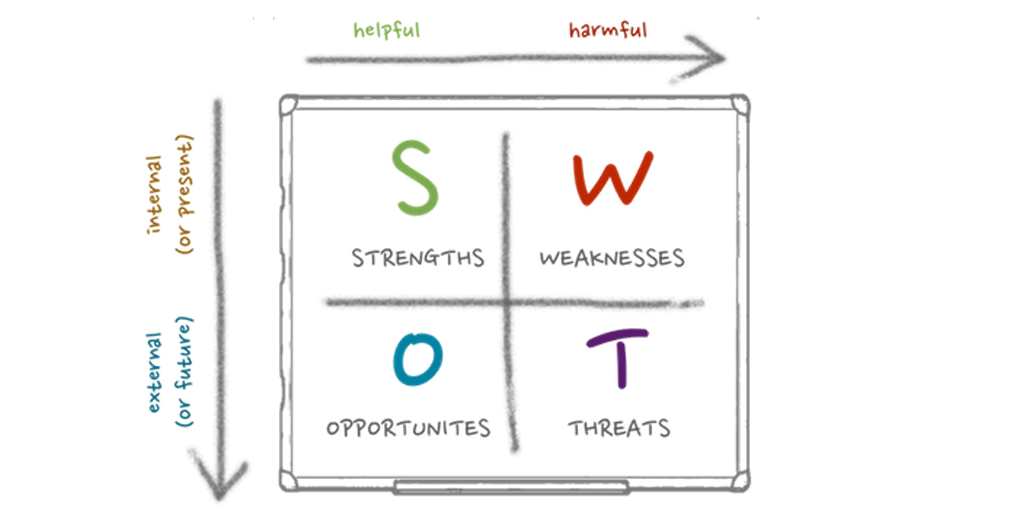The concept revolves around evaluating internal capabilities (strengths and weaknesses) in conjunction with the external environment (opportunities and threats). Armed with this holistic analysis, organizations can identify strategic priorities and formulate plans accordingly.
However, the naming of the method, with an implied hierarchical structure, has posed challenges for strategy discussions within teams. Without a proper framework, analyzing organizational strengths and weaknesses can become abstract and unfocused. Consequently, groups often struggle to define these aspects, leading to frustration, exhaustion, and a lack of attention towards critical external developments.
A more progressive approach suggests commencing the analysis by first examining the environment, followed by an assessment of the organization. This entails assessing the organization’s external landscape, identifying emerging threats, and potential opportunities. It is crucial for the assessment team to be well-versed in the realities of the organization and knowledgeable about its operating environment.
Once potential threats and opportunities have been identified, the group can evaluate them in relation to the organization’s capabilities. Are there weaknesses that render the organization particularly vulnerable to specific threats? Conversely, are there strengths that position it favorably to pursue certain opportunities?
The ultimate objective is to translate these assessments into a set of strategic priorities, mitigating critical threats and capitalizing on high-potential opportunities. These priorities then serve as inputs for a more comprehensive strategic planning process.
Although a name change is unlikely, there is room to introduce more structure and discipline into the process. By refining SWOT analysis, organizations can unlock its full potential for strategic decision-making.
RELATED READING: http://smallbusiness.chron.com/difference-between-strategic-plan-swot-analysis-23613.html

